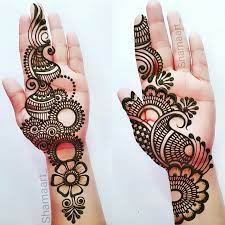Mehandi, a traditional henna art form, has adorned hands and feet for centuries, symbolizing joy, beauty, and spiritual awakening. Originating from ancient cultures, this intricate design practice is more than mere decoration; it’s a cultural statement. Central to many celebrations, especially weddings, Mehandi carries stories, blessings, and wishes for luck. Today, its appeal has transcended borders, with modern adaptations infusing contemporary styles, ensuring this ancient art continues to captivate generations anew.
Origins of Mehandi: Tracing its Historical Roots
Mehandi, commonly known as henna, has deep roots that trace back thousands of years. Believed to have originated in ancient Egypt, it was said that even Cleopatra used henna to adorn her body. From the banks of the Nile, Mehandi journeyed to India, where it became an indispensable part of the culture, especially in weddings and religious ceremonies.
The use of Mehandi in the Indian subcontinent can be dated back to the early Vedic period. It symbolized the union of two souls in marital bliss. In time, as its popularity grew, intricate patterns and designs evolved, each with its unique story and significance.
Mehandi’s significance wasn’t just limited to India. Across the Middle East and North Africa, henna became a part of celebratory rituals. For instance, The Berbers of Morocco have a distinct henna application style.
As we trace the historical journey of Mehandi, it becomes evident that this isn’t just an art form. It’s a testament to human connectivity, shared cultures, and the universal love for beauty and symbolism.
Techniques and Patterns: Mastering the Intricacies of Mehandi Design
Mehandi, the art of henna application, has woven its magic across centuries, drawing admiration for its intricate patterns and designs. Mastering these motifs isn’t mere child’s play; it requires precision, creativity, and a deep understanding of their symbolic meanings.
Different regions have distinct Mehandi styles. Indian Mehandi, for example, is characterized by detailed paisleys, peacocks, and floral patterns, often extending from the fingertips up the forearm, reflecting stories of nature, love, and prosperity. On the other hand, Arabic Mehandi is more spaced with bold, linear designs, usually showcasing flowers, leaves, and vines.
Then, the Moroccan style incorporates more geometric designs, reflecting their historical Berber culture. African Mehandi patterns are broad and bold, focusing on geometric shapes, dots, and lines.
While the fundamental technique of Mehandi application remains consistent – a paste of crushed henna leaves applied with a cone – the magic lies in mastering the balance between spacing, symmetry, and detailing. As enthusiasts delve deeper into the world of Mehandi, they discover that every stroke is a blend of tradition, emotion, and artistry, weaving tales of history, hope, and celebration.
Cultural Significance: The Role of Mehandi in Celebrations and Rituals
Across diverse landscapes and throughout the annals of time, Mehandi has held a revered position in the heart of various cultures. More than just decorative art, its vibrant designs tell tales of tradition, societal norms, and shared values.
In the Indian subcontinent, Mehandi is an integral part of wedding festivities. Bridal Mehandi is an entire event where the bride’s hands and feet are adorned with intricate patterns symbolizing love, joy, and prosperity. The groom’s initials are often hidden within the design, adding a playful element to the ceremony. The depth of the henna’s colour on the bride’s hands is believed to reflect the strength of her marital love.
Similarly, in Middle Eastern cultures, Eid and other significant religious holidays often see women of all ages decorating their hands with henna. In North Africa, Mehandi serves as both a celebratory and protective ritual. The Berbers, for instance, believe in the protective powers of henna against the evil eye.
Mehandi’s universal appeal lies in its beauty and ability to convey cultural narratives and shared emotions. It transcends being mere decoration; it’s a ritual, a symbol, and a cherished tradition echoing the heartbeat of communities worldwide.
Modern Adaptations: The Evolution of Traditional Mehandi in Contemporary Fashion
With its rich historical tapestry, Mehandi has not been bound by tradition alone. As the world became a global village, this ancient art evolved, merging with contemporary aesthetics to birth modern interpretations.
Today’s fashion runways often showcase models with minimalist Mehandi designs, a fusion of traditional motifs, and sleek, modern patterns. These designs are not confined to hands and feet but traverse the arms, back, and even the nape of the neck, reflecting a blend of tradition and avant-garde sensibilities.
Beyond the high fashion world, temporary henna tattoos have become a popular trend among youths worldwide. These tattoos often borrow elements from traditional Mehandi but are combined with symbols from popular culture, allowing wearers to make a unique style statement.
Another remarkable adaptation is the use of colored hennas. While traditional Mehandi imparts a reddish-brown hue, contemporary enthusiasts experiment with various colors, adding a whimsical touch to the designs.
The evolution of Mehandi in modern fashion is a testament to its timeless appeal. As it melds with contemporary sensibilities, it preserves its essence and reinvents itself, ensuring its relevance for future generations.
Conclusion
Mehandi, often known as henna, is an age-old art form that intricately intertwines culture, celebration, and aesthetics. Rooted in ancient traditions, its rich patterns adorn hands and feet during significant life events, especially weddings in regions like India and the Middle East. Beyond its decorative allure, Mehandi is a rite of passage, marking transitions and festive occasions. In recent years, its appeal has gone global, with many embracing it for its unique designs and temporary nature. Whether showcased as bridal art or a trendy tattoo, Mehandi remains a testament to human creativity, binding generations with threads of history, beauty, and shared cultural narratives.
Also, Read The Following: корабелов инфо


